Here’s some positive news to spice up your holiday! Early Columbia River salmon forecasts show signs of improvement in 2022, plus a pilot run of smelt already seen in the Cowlitz River Leave a reply
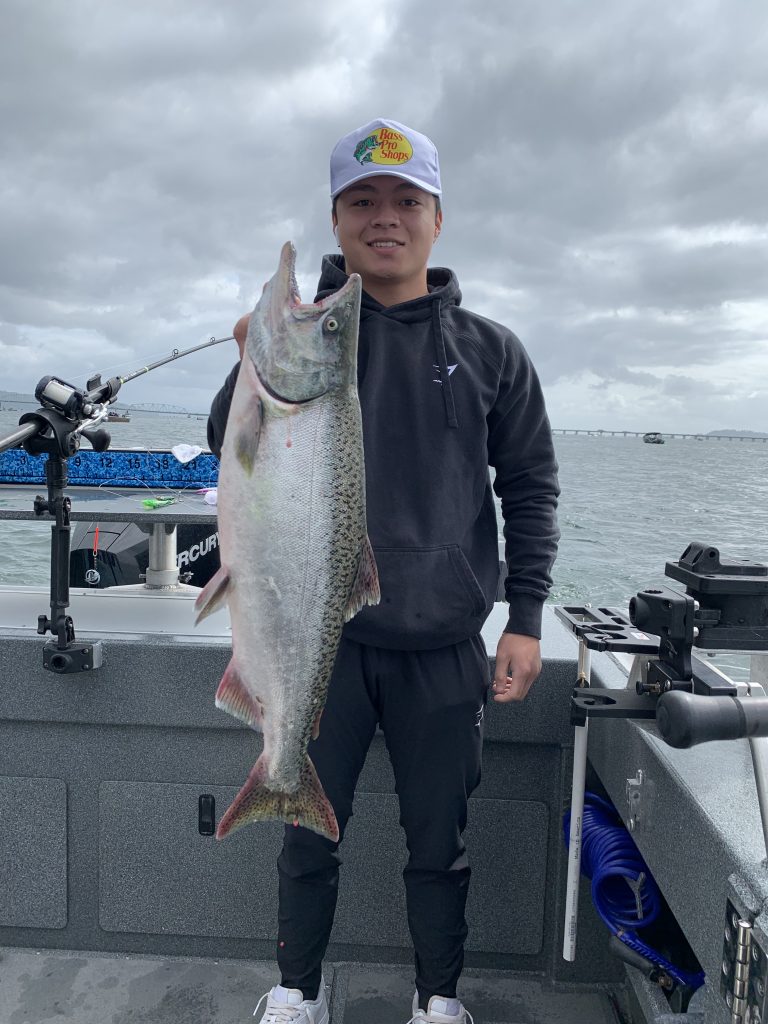
By Mark Yuasa
Early Columbia River salmon forecasts came to light recently, and it appears were finally out of the woods and in for more happier times heading into the New Year.
The Washington Department of Fish and Wildlife (WDFW) unveiled their “crystal ball” of 2022 Columbia River salmon forecasts, which disclosed a positive outlook for sport fishing.
“Generally, runs are forecasted to be higher than last year in part due to improving environmental conditions and expected to provide improved fishing opportunities,” said Ryan Lothrop, the WDFW Columbia River salmon fishery manager. “Summer chinook are still above run sizes from two to four years ago, and (how much time on the water) largely depends on sharing (with tribal co-managers).”
For the second year in a row, ocean conditions remain in a neutral state, which fosters upwelling of cool, nutrient-rich sea water.
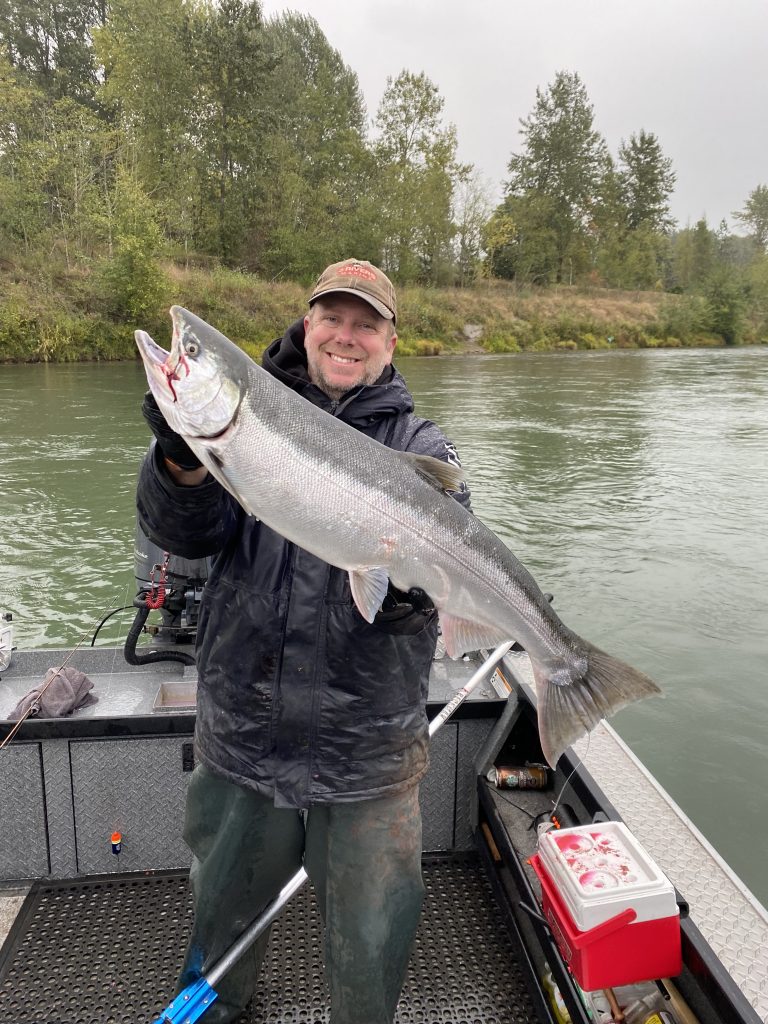
The highlight of the preliminary 2022 forecasts is the computer generated “paper fish” predictions by WDFW that show an improvement for coho jack returns, which is expected to sixth highest seen since 1977 when 90,092 returned to hatcheries.
Coho are a “wild card” as they migrate to different places in the ocean, but WDFW is hopeful that the forecasts will continue to come to fruition as they did in 2021 when the forecast was 1,343,200 compared to a puny 2020 forecast of 140,190. Last summer fishing was very productive for coho from Buoy 10 at the mouth and throughout the river system and tributaries.
Fishery managers base the following year’s adult coho return on how jack returns looked the year before. While it appears to be a positive outlook there is still some uncertainty related to recovery from events like the “Blob” a massive pool of warm-water phenomenon that showed up in the northern Pacific Ocean from 2012 to 2016 and negatively affected the marine ecosystem.
The Columbia coho stock is divided into two components – the early “A-run” and the late “B-run.” The early run is timed to arrive in September, and the late run makes its appearance in October and November.
Both coho stocks drive the ocean and in-river salmon seasons from Neah Bay south to Ilwaco. All the coastal ports saw rather liberal hatchery coho catch quotas not seen in quite some time.
Spring chinook – the first migrating salmon to arrive in Washington – are prized for their tasty, Omega-3-laced, red-orange-colored meat, which is similar to fish from Alaska’s Copper River.
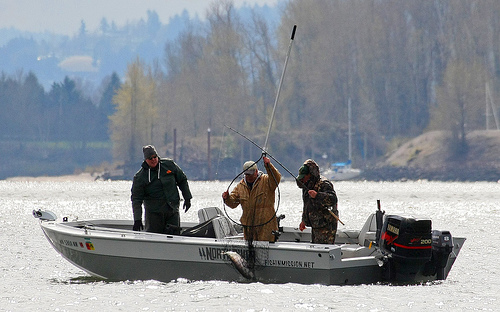
The height of the return is March and April, when anglers are breaking out of “cabin fever” that creates an early fishing frenzy along the Lower Columbia.
The prediction by WDFW calls for a total spring chinook return of 197,000 (compared to 143,200 forecast and actual return of 152,675 in 2021), and should allow for an improved sport season.
The upriver return of 122,900 is the highest predicted return since 2016 and 65 percent of the 10-year average. The 2021 forecast was 75,200 with an actual return of 91,736 and that was the fourth lowest since 1999.
On the Oregon side, the 2022 Willamette River spring chinook run of 51,200 (plus 1,740 jacks) is a smidge better than the 2021 forecast of 50,050 and an actual return of 41,308. The Sandy River forecast is 5,600 compared to a 2-2021 forecast of 5,300 and an actual return of 5.676.
On the Washington side, the Kalama forecast in 2022 is 2,000 (2,200 was forecast in 2021 and an actual return of 1,883); Cowlitz is 4,100 (1,800 and 3,478); Lewis is 2,400 (2,400 and 2,840); Wind is 4,200 (1,200 and 3,227); Drano is 3,800 (3,900 and 3,299); and Klickitat is 1,800 (1,500 and 1,821). The Snake River portion is predicted at 74,100 up from 68,000 forecast and 60,939 actual return in 2021.
There is a yearly 30 percent buffer on the Columbia spring chinook mainstem fisheries that protects against overfishing. A decision on sport fishing seasons should be announced by the mid- to late-January.
The Lower Columbia mainstem spring chinook fishery in 2021 produced 67,219 angler trips the highest since 2018 with 5,385 adult hatchery spring chinook kept and 1,128 released, and 294 hatchery steelhead kept and 224 released. That’s compared to 36,250 angler trips in 2020 (the lowest since 2000) with 1,462 adult hatchery spring chinook kept and 1,218 released and 1,129 hatchery steelhead kept and 399 released.
The Lower Columbia mainstem spring chinook season was open daily from Jan. 1-Feb. 28 from Buoy 10 to I-5 Bridge, and March 1 to April 4 from Buoy 10 to Bonneville, plus May 21-23, May 29, and June 1-15 from Tongue Point to Bonneville. The sockeye fishery opened on May 15 and 1,119 sockeye were kept and 105 released.
It isn’t unusual each winter to see the first spring chinook caught in January or early February either in the Lower Columbia, Multnomah Channel or Lower Willamette.
Spring chinook returns to tributaries above Bonneville Dam are showing signs of improvement in 2022 after recovering from dismal ocean conditions between 2015 and 2019 that were among the worst in the past 20 years.
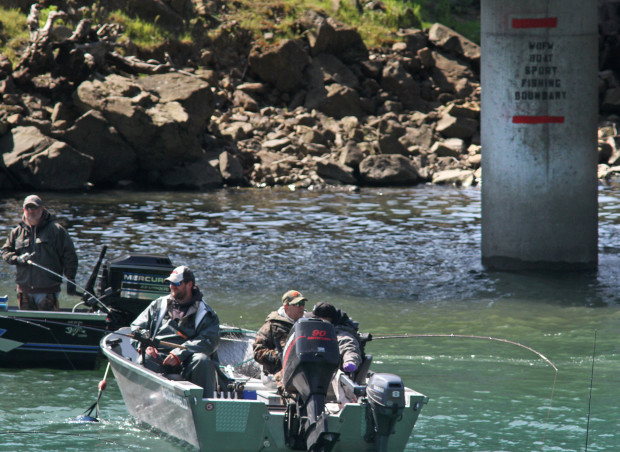
The Columbia above Bonneville to McNary for spring chinook had a 2021 season from March 16 to May 5, May 22-23, May 29-30, June 5-6 and June 12-15. That was a big improvement over a brief eight-day season in 2020. The 2021 fishery saw 5,211 angler trips with 745 adult spring chinook kept and 341 released. The section at McNary to Oregon-Washington boundary yielded 16 adult spring chinook kept and seven released during the same time frame.
Two sections of the Snake River spring chinook season were open May 4, 7, 11, 25 and June 4 and 6, and generated 7,736 angler hours with 443 adult spring chinook kept and 123 released.
There could also be some positivity as we progress into early summer along the 1,243-mile stretch of the Columbia River.
The 2022 Upper Columbia summer chinook return of 57,500 is down from a forecast in 2021 of 78,800 but somewhat better than an actual return of 56,800. It is also way up from 38,300 forecast and an actual return of 65,494 in 2020, and 36,340 and 34,619 in 2019.
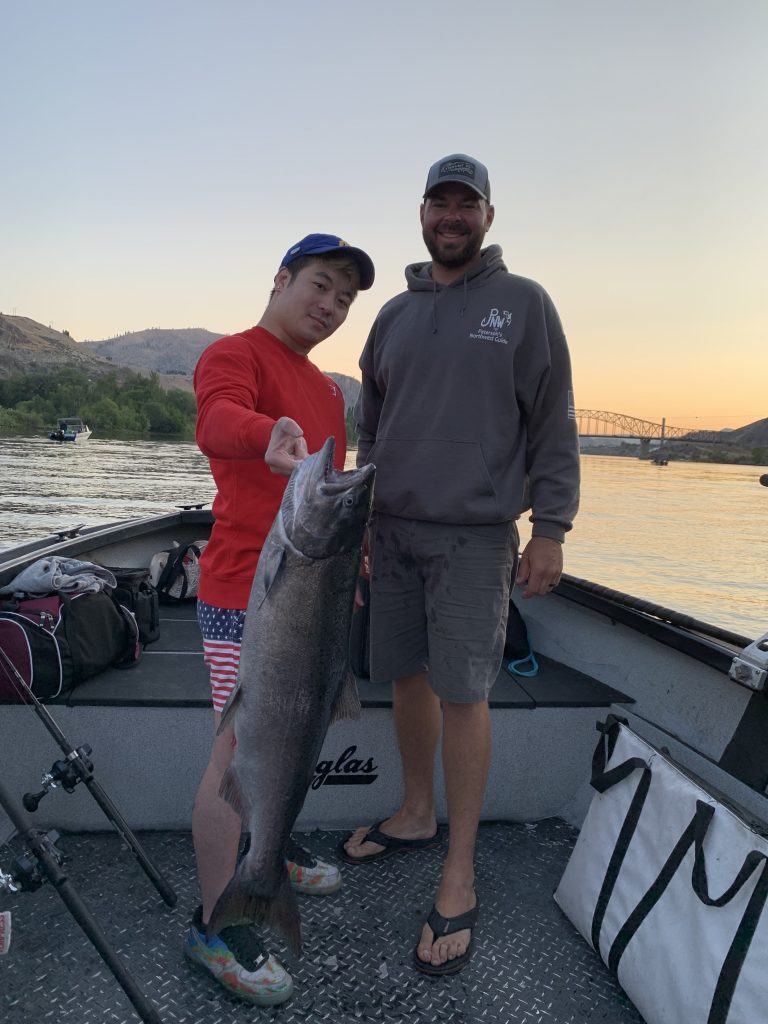
Fishing for summer run kings also known as “June Hogs” was open in July of 2021 and generated fair to good fishing near Rocky Reach Dam to Chelan Falls and many open areas downstream.
The bulk of the summer chinook fishery occurred July 1-Oct. 15 (season was open with marked selective fishery regulations in various locations including tributaries) upstream of Priest Rapids Dam saw 29,208 angler trips with 5,057 adult chinook kept and 1,952 released (compared to 39,420 angler trips in 2020 with 4,742 adult chinook kept and 1,772 released).
The summer chinook fishery June 16-July 5 (Open for sockeye and steelhead only from June 16-July 31) in Lower Columbia from Astoria Bridge to Bonneville saw 28,868 angler trips with 2,134 adult chinook kept and 998 released, plus 534 sockeye kept and 72 released and 1,048 steelhead kept and 950 released.
Anglers should also see a noticeable improvement on sockeye success in the Columbia during late spring and early summer with a forecast of 198,700 up from 155,600 in 2021 and an actual return of 151,765.
While it might not be anywhere near the 202 return of 345,018 – the highest return since 2016 – it should generate some fairly good fishing at places like the Brewster Pool.
The Okanogan sockeye run forecast of 175,700 (127,300 was forecast with an actual return of 105,492 in 2021) is the key driver in summer upper river fisheries where many linger in the Brewster Pool, a popular early-summer deep-water salmon fishing location on the Upper Columbia.
Sockeye migrate from its confluence just below Chief Joseph Dam, north into its headwater lakes in British Columbia that is known for its notoriously warm water and changing river flow patterns in the summer.
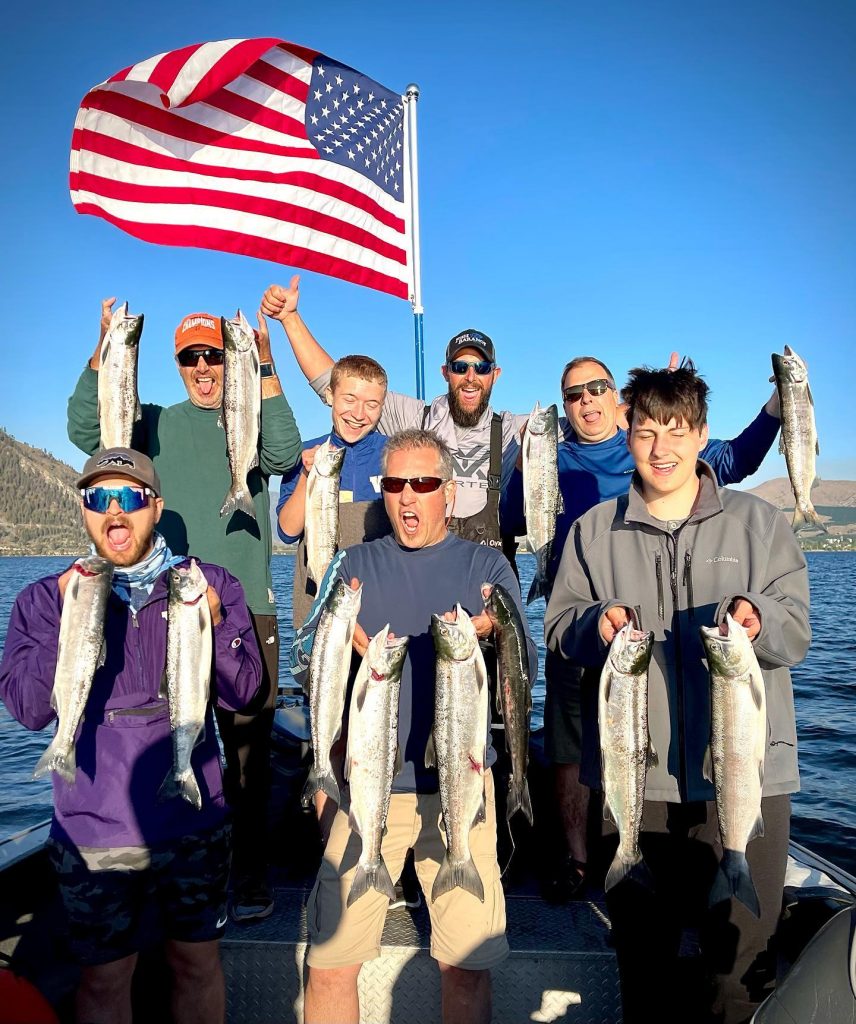
The summer-migrating sockeye are learning to adapt their upstream migration timing in recent years therefore most fish returns are peaking sooner than later in the summer. Over the past few decades, the run would peak by early July but it’s shifted to late June and has resulted in higher sockeye survival in recent years.
The Lake Wenatchee sockeye forecast is 19,200 (27,300 was forecasted in 2019 with an actual return of 41,219). The lake is a highly popular mid- to late-summer sport salmon fishery. The annual escapement goal is 23,000 sockeye at Tumwater Dam and only then a lake fishery can be considered.
The remaining Columbia fall salmon forecasts will be released soon, but there is continued improvement especially for fall chinook. Last year’s prediction was 576,300 adult fall chinook and the preliminary return in 2021 was 80 percent of the forecast. The 2022 return should be similar or greater than 2021.
Last year’s adult “bright” chinook forecast was 455,100. The 2021 tule fall chinook forecast was 121,100 and the preliminary return was similar to the forecast, and are the most prized sport fish and a driving force in ocean fisheries and at Buoy 10 near the Columbia River mouth.
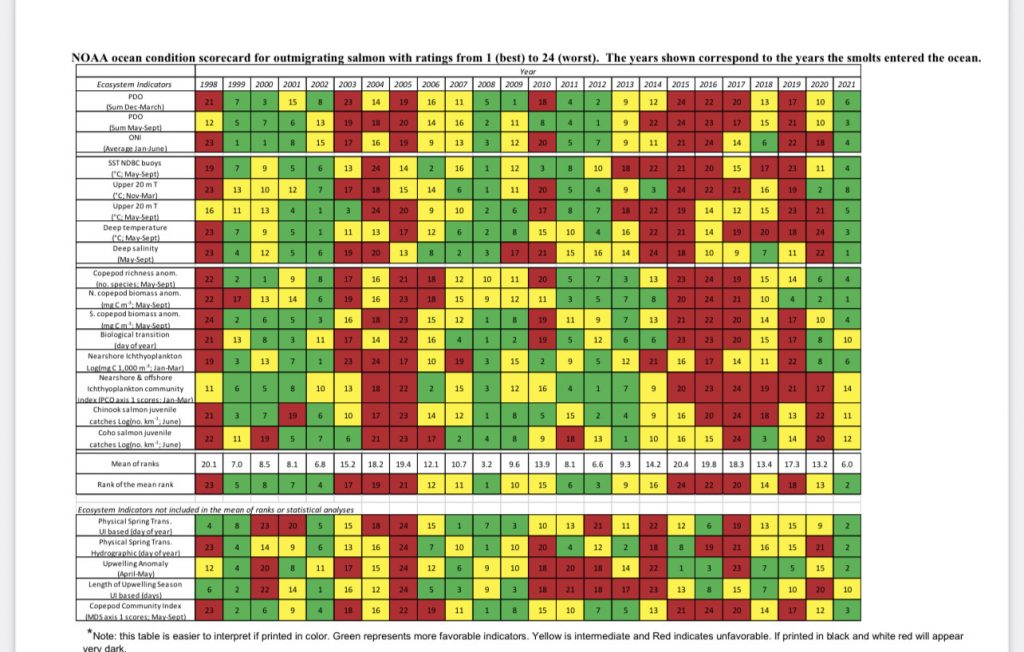
NOAA also reported additional positive news in their ocean scorecard for out-migrating young salmon in 2021, and virtually all runs scored high favorable “green” ratings with five in the “yellow” intermediate sector and none listed “red” as unfavorable.
Word on Columbia smelt and shad runs
The Columbia smelt return in 2022 is anyone’s guess but there was some good news earlier this month when a pilot run of smelt made its way up the Cowlitz River.
“Smelt were observed in the Cowlitz around Thanksgiving, not very unusual, but a good sign for the run this (coming) year,” said Laura Heironimus, a WDFW smelt biologist. “The forecast will be available with the Joint Staff Report in January, but so far signs are looking generally positive.”
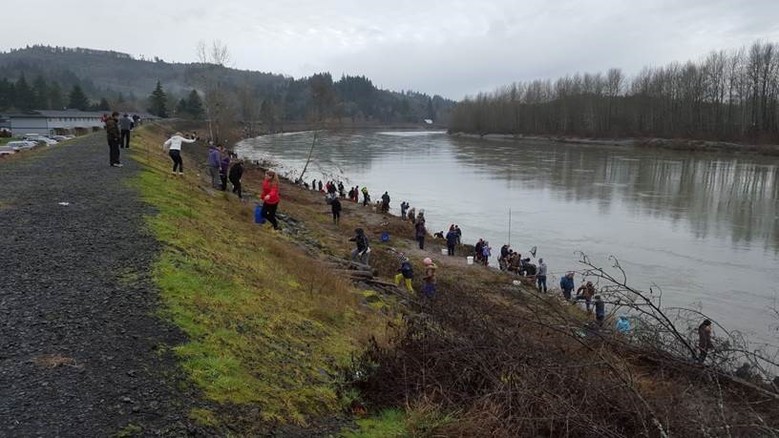
In 2021 the smelt run was improved and came in around 9-million pounds, and it is expected to be decent in 2022. There will be a hearing in mid-January to consider a commercial opener.
The smelt fishery in 2021 was held on March 2 only in the Cowlitz River with 91,250 pounds landed by dip-netters. In 2020 there was a two-day season (Feb. 14 and 26) with 35,000 pounds landed.
Another excellent Columbia shad run is expected in 2022. In 2021, 5.8-million compared to the 10-year average of 3.7-million. Look for another banner year of fishing starting sometime in May. In the 2021 the Lower Columbia shad fishery had 16,918 angler trips with 153,606 shad kept (effort was down from 17,846 angler trips in 2020 although shad kept was up compared to 138,247).
Here’s a look at how Columbia fall salmon fisheries fared in 2021:
The Buoy 10 chinook fishery was open Aug. 1-26 and Oct. 1-31. It generated 102,449 angler trips (the highest since 2015) with 20,749 chinook kept and 9,860 released, plus 35,628 coho kept and 26,924 released. This compares to 2020 with 66,254 angler trips (lowest turnout since 2013) with 14,323 chinook kept and 5,329 released, plus 6,474 coho kept and 7,668 released.
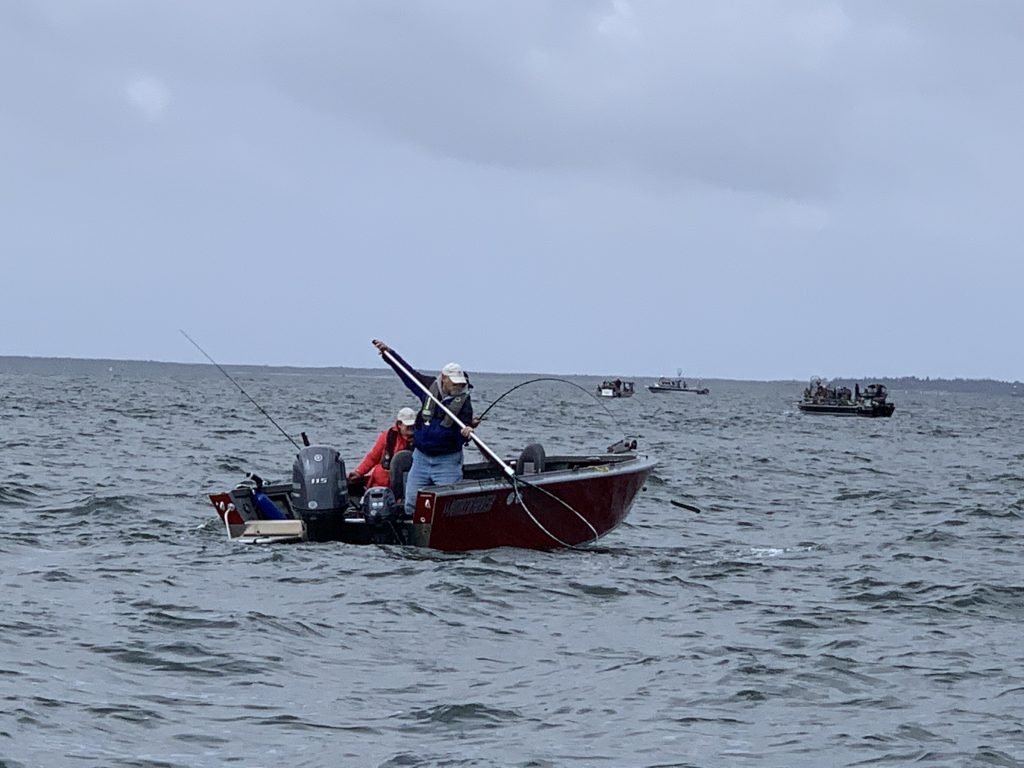
The Lower Columbia fishery from Tongue Point/Rocky Point to Bonneville was open Aug. 1-Sept. 3 and Oct. 1-31 and coho only from Sept. 17-20 from Tongue Point/Rocky Point to Warrior Rock, Aug. 1-Sept. 6 and Sept. 11-Oct. 31 from Warrior Rock to Bonneville (steelhead retention was closed in Aug. 1-Oct. 31). There were 87,268 angler trips with 18,900 adult chinook kept (11th highest on record) and 1,046 released, plus 5,524 coho kept (2nd highest on record) and 2,910 coho released and 11 illegally kept and 478 hatchery/wild steelhead released. This compares to 2020 with 90,413 angler trips (August to October was highest turnout since 2017) with 19,677 adult chinook kept and 752 released, plus 1,537 coho kept and 775 coho and 385 wild steelhead released.
The Columbia from Bonneville to McNary fishery was open Aug. 1-Dec. 31 plus scattered steelhead closures. It had 19,771 angler trips Aug. 1-Nov. 25 with 5,306 adult chinook kept and 519 released, plus 4,921 coho kept and 200 released and no steelhead kept and 49 hatchery/wild steelhead released. This compares to 2020 with 22,293 angler trips Aug. 1-Nov. 25 with 5,759 adult chinook kept and 343 released, plus 1,004 coho kept and 215 released and 55 steelhead kept and 275 released.
The Columbia fall season from McNary to Highway 395 Bridge had 511 angler trips with 136 chinook and 78 coho kept during same time frame as Bonneville to McNary. This compares to 2021 with 390 angler trips with 16 chinook kept.
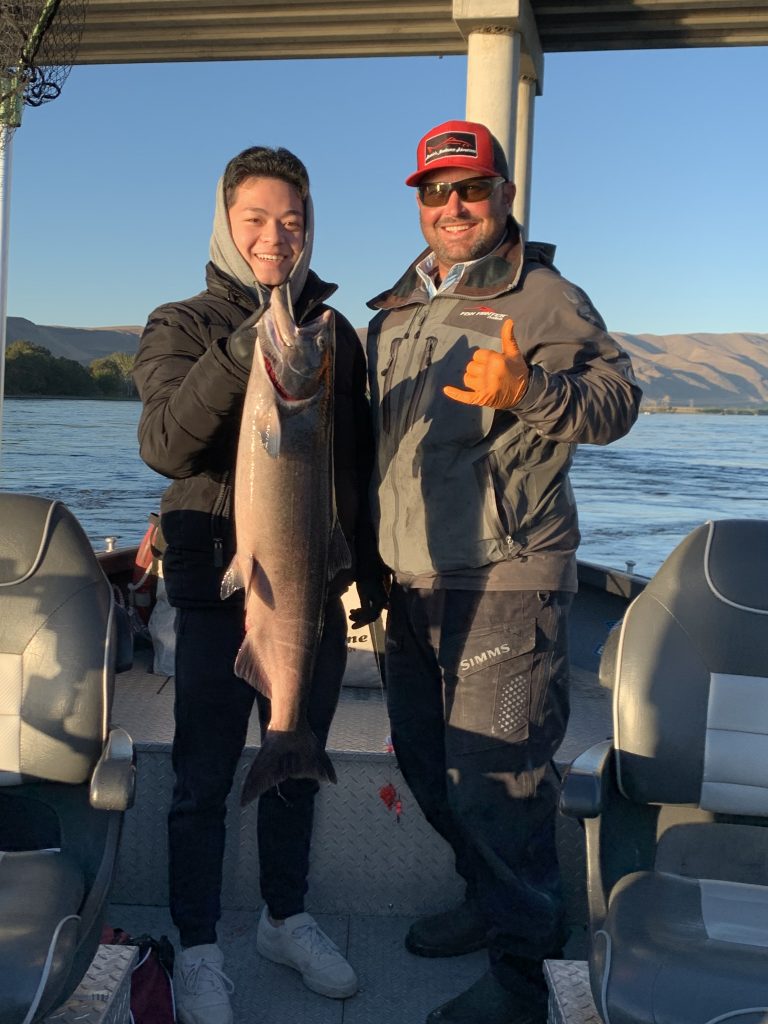
The Columbia in Hanford Reach from Aug. 16-Oct. 31 had 33,271 angler trips with 11,494 adult chinook and 957 jack chinook kept, plus 234 coho kept and 188 sockeye and 135 steelhead released. The 2021 fishery witnessed a 22 percent decrease in harvest from 2020 fishery. This compares to 2021 with 39,028 angler trips with 14,633 adult chinook and 1,391 jack chinook kept, plus 104 coho kept and 188 sockeye and 135 steelhead released. The 2020 fishery witnessed a 23 percent increase in harvest from 2019 fishery.
Upcoming salmon meetings
Feb. 24, Ocean Salmon Industry Group 2021 forecasts and initial discussions of 2021 season options. Early March with date TBD, WDFW public salmon forecast meeting. March 8-14, Pacific Fishery Management Council (PFMC) will adopt initial 2022 ocean fishing options. Mid-March specific date TBD, North of Falcon (NOF) public meeting on fisheries in Puget Sound, Willapa Bay, Grays Harbor and ocean areas north of Oregon. Mid-March specific date TBD, Columbia River NOF meeting. March 22-23, PFMC public input in 2022 season options. Late-March or early-April, NOF public meeting. April 6-13, PFMC meeting to adopt final salmon fishing seasons.
(Meeting sites have yet to be determined and could likely be hybrid or virtual)

